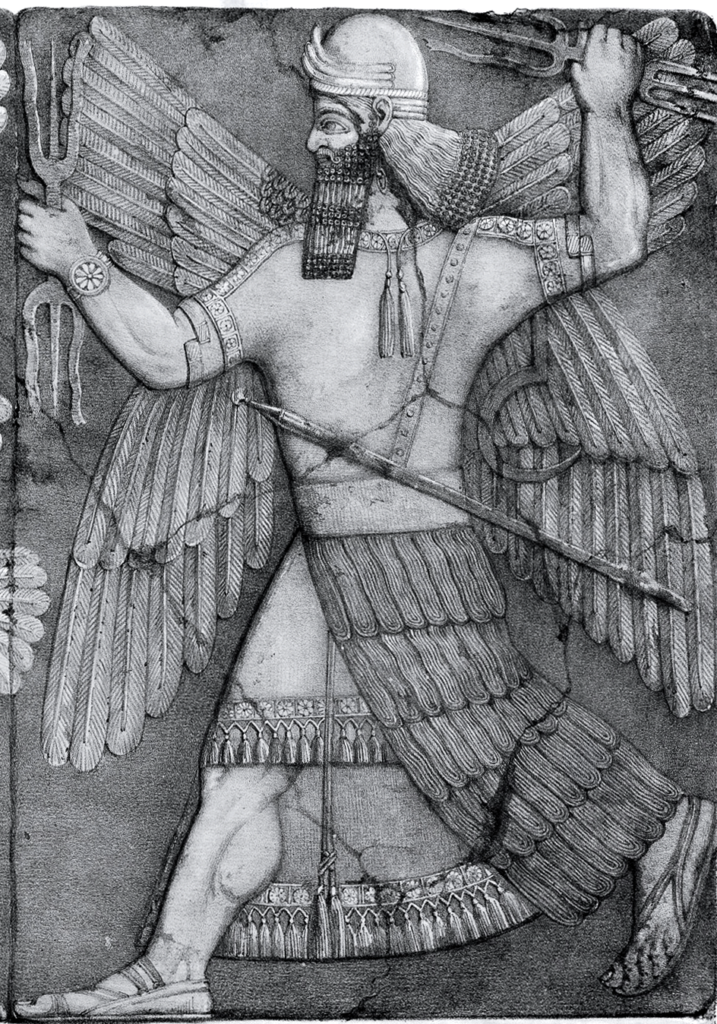Mesopotamian god dedicated to war and agriculture

In Indian culture, you will find some deity dedicated to weather, wealth, health, or happiness. But did you know that the Sumerian culture also had a deity named Nin-Girsu, dedicated to spring and war? About whom we will know in detail today. He is Mesopotamian god dedicated to war and agriculture.
Mesopotamian god
Nin-Girsu, also known as Ninurta, was an ancient deity in the Mesopotamian culture. He was a god associated with agriculture, medicine, hunting, law, and war. The early Sumerians considered him a god of agriculture and medicine, who protected people from disease and demons. Later, he also became the god of war.

Origin of this god
Many believed that he was the son of Enlil (an ancient Mesopotamian god associated with wind, earth, and storms.). People in the ancient land of Mesopotamia used a special symbol, the “plough”, to represent Nin-Girsu. A plough is a tool used to cultivate the land. People believed that Nin-Girsu was the god of farming and agriculture, so it was appropriate to use the plough as his symbol.
In addition to the plough, “a bird sitting on a perch” was also used to represent Nin-girsu. Nin-Girsu was worshiped at the Ashumesha Temple in the city of Nippur as the god of agriculture and the son of the chief-god Enlil. Nin-Girsu was known for his aggressive and warlike personality. Nin-Girsu’s reputation as a brilliant warrior made him very popular among the Assyrians.

Legend related to Ninirsu
Many legends related to Ninirsu are prevalent in Mesopotamian culture. According to a popular legend, he made the world habitable by separating En (Heaven) from Ki (Ki) i.e. Earth. Apart from this, he also had a big role in the story of a flood, according to which he once saved a person named Zeusudra by giving him immortality amid a heavy flood. However, in some legends, he is considered the cause of the flood, because according to the story, once the humans were making too much noise and could not sleep. That’s why he created a flood with his powers.
Gudeya, ruler of the ancient city of Lagash in southern Mesopotamia (Din al-Hiba in modern-day Iraq) from about 2144 to 2124 BCE, was considered a great devotee of the war god Nin-Girsu. During his reign, he is believed to have spent much time and money renovating the temple of Nin-Girsu. Gudeya also buried some clay slabs in the foundation of the temple. These slabs were found in the late 1800s, containing He had four dreams recorded.
Another story
One tablet tells the story of Gudeya’s dream in which Nin-Girsu ordered him (Gudeya) to rebuild the temple. In the dream, Nin-Girsu also promised that after the temple was built, he would make it rain so that crops would grow and people’s lives would be prosperous. Interestingly, recently archaeologists also discovered a 4,500-year-old temple dedicated to the Mesopotamian god Nin-Girsu in southeastern Iraq. This mud-brick temple was in the center of the ancient city of Girsu, now known as Telo. Girsu was an important cultural center in Mesopotamia, which is now part of Iraq, Syria, Turkey, Iran, and Kuwait. The Sumerians are probably the oldest civilization in the world who first established a religion and a code of law.
Remains of Ningirsu
French archaeologist Ernest de Saraczek first discovered the remains of Girsu in 1877, including a 4,000-year-old statue of the Sumerian king Gudeya, who ruled the city in the late 3rd millennium BCE. After that, people thought there was nothing left to dig. However, more than a century later, a team of archaeologists from the British Museum discovered the massive temple. For this, they used remote sensing techniques and created digital elevation models to understand how the landscape has changed since the 19th-century excavations.

In short, the ancient Mesopotamian god Nin-Girsu was a multifaceted deity associated with agriculture, medicine, hunting, law, and war. He was known for his aggressive and warlike personality and many legends related to him are prevalent in Mesopotamian culture. The discovery of a 4,500-year-old temple dedicated to Nin-Girsu in southeastern Iraq is considered an important archaeological discovery, revealing the history and beliefs of the Sumerian civilization.